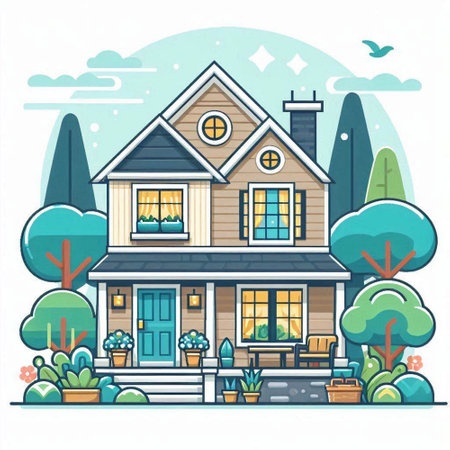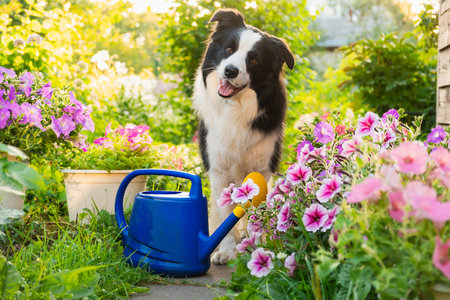1. Understanding the Risks: Common Houseplants and Pet Safety
When it comes to filling your home with beautiful houseplants, many British households turn to traditional favourites such as peace lilies, English ivy, and spider plants. While these lush additions can brighten up any room and even improve indoor air quality, it’s important for pet owners to be aware that not all houseplants are safe for our four-legged friends. For example, the ever-popular peace lily (Spathiphyllum) is commonly found on British windowsills but can cause irritation or sickness if chewed by cats or dogs. Similarly, English ivy (Hedera helix), often used in hanging baskets or as a decorative climber indoors, contains compounds that may cause stomach upset or more severe symptoms in curious pets. Even seemingly harmless plants like the spider plant (Chlorophytum comosum) can tempt playful cats due to their dangling leaves, although they are generally considered non-toxic but might lead to mild digestive issues if nibbled excessively. As a responsible pet owner and plant enthusiast, understanding which common British houseplants may pose risks—and which are safer alternatives—will help you create a harmonious environment where both your greenery and your pets can thrive.
Choosing Pet-Friendly Plants
When it comes to creating a harmonious home for both your beloved pets and treasured houseplants, the first step is selecting species that are safe for curious paws and whiskers. Many popular indoor plants can pose risks to cats and dogs if nibbled or chewed, so being mindful of your choices is essential. Fortunately, there are plenty of pet-safe options that thrive in British homes and offer just as much greenery and charm as their toxic counterparts.
Trusted British Favourites
Some classic houseplants have earned their place in British households not only for their beauty but also for their non-toxic nature. Here’s a handy table highlighting some pet-friendly favourites alongside common toxic varieties they can replace:
| Pet-Safe Plant | Popular Toxic Alternative | Notes & Care Tips |
|---|---|---|
| Spider Plant (Chlorophytum comosum) | Peace Lily (Spathiphyllum) | Thrives in indirect light; easy care; safe for cats and dogs. |
| Bamboo Palm (Chamaedorea seifrizii) | Sago Palm (Cycas revoluta) | Palm-like appearance; gentle on pets; prefers filtered light. |
| Boston Fern (Nephrolepis exaltata) | Asparagus Fern (Asparagus densiflorus) | Lush fronds; likes humidity; excellent for bathrooms. |
| Areca Palm (Dypsis lutescens) | Aloe Vera (Aloe barbadensis miller) | Tropical look; non-toxic; needs bright, indirect light. |
| Ponytail Palm (Beaucarnea recurvata) | Dumb Cane (Dieffenbachia spp.) | Drought-tolerant; whimsical shape; safe for pets. |
| Calathea (Calathea spp.) | Philodendron (Philodendron spp.) | Vivid leaf patterns; shade tolerant; no harm to animals. |
Avoiding Common Hazards: What to Watch For
If you’re unsure whether a plant is suitable, always check with reputable sources such as the Royal Horticultural Society (RHS) or consult your local garden centre. Be especially wary of lilies, philodendrons, and pothos—these are frequently found in UK homes but are best avoided if you share your space with furry companions. Instead, opt for resilient choices like the spider plant or Boston fern, which not only flourish indoors but also provide peace of mind.
Caring for Your Pet-Friendly Plants
Selecting safe plants is only the beginning. Remember to place them where inquisitive pets won’t be tempted to dig or chew, and choose sturdy pots that won’t topple easily. With thoughtful selection and placement, you can enjoy the pleasures of indoor gardening while keeping every member of your household happy and healthy.

3. Creating Safe Spaces: Placement and Barriers
When it comes to keeping your beloved houseplants out of harm’s way, thoughtful placement is key. British homes often have cosy corners and bright windowsills perfect for showcasing greenery, but these spots can also attract inquisitive pets. To strike the right balance, consider elevating your plants on sturdy shelves that are well beyond the reach of wagging tails or climbing kittens. Opt for wall-mounted shelves or bookcases with enough height to deter even the most determined jumper.
Hanging planters are another clever solution, especially in homes with limited surface space. By suspending your favourite ferns or trailing ivy from the ceiling, you keep them safely above paw level while adding a touch of botanical charm to your decor. Just be sure that hooks and fixings are secure – British weather can be unpredictable, and a strong draught through an open window could send a poorly anchored planter tumbling down.
If you have particularly persistent pets, room dividers can offer an extra layer of protection. Use decorative folding screens or repurpose shelving units as visual barriers to create plant-friendly zones within your living space. This not only keeps curious noses at bay but also allows you to curate a mini indoor garden that feels separate and serene. Remember, consistency is important: once boundaries are set, try not to move plants around too frequently, as this may confuse your furry friends and invite fresh investigation.
4. Training Your Pets Around Plants
When it comes to keeping houseplants safe from curious paws and nibbling mouths, gentle training is a British gardener’s most reliable ally. Rather than scolding or punishing, positive reinforcement encourages pets to learn appropriate boundaries while maintaining a harmonious home environment. Here are some time-honoured techniques that have stood the test of generations:
Positive Reinforcement: The British Way
Rewarding good behaviour is at the heart of effective pet training. Whenever your pet ignores or walks past a houseplant without interfering, offer them a favourite treat or a few kind words—“Good lad!” or “Well done, love!” Over time, this consistent praise helps pets associate leaving plants alone with positive outcomes.
Common British Pet-Training Wisdom
| Technique | Description |
|---|---|
| Distraction | Provide alternative toys or scratching posts near plants to divert attention. |
| “No” Command | A firm but calm “No” when your pet approaches a plant reinforces boundaries without frightening them. |
| Consistency | Always react the same way each time your pet shows interest in a plant for clear communication. |
| Praise & Treats | Reward non-plant behaviour immediately to strengthen the desired response. |
Cultural Tips from British Pet-Keepers
In many British homes, patience is key. It’s not uncommon to see a cat lounging on a sunny windowsill just beside the begonias or a dog sniffing curiously at a pot of lavender. By calmly redirecting their attention and offering gentle reminders, pets soon learn which areas are off-limits. Some gardeners even use traditional deterrents, such as placing citrus peels around pots—a scent most cats and dogs find off-putting but perfectly natural for your indoor garden.
Remember: Every pet has its quirks, so observe and adapt these methods to suit your own household’s needs. With kindness and consistency, you’ll foster both thriving plants and well-mannered companions.
5. Dealing with Accidents: What to Do If Your Pet Eats a Plant
Even with the most vigilant care, curious pets sometimes manage to nibble on houseplants that could be harmful. If you suspect or witness your furry friend munching on a risky plant, it’s essential to act quickly and calmly to ensure their safety. Here’s what every British gardener and pet owner should know.
Immediate Steps to Take
First, remove any plant material from your pet’s mouth and keep the plant sample for identification. Try to determine how much was eaten and which part of the plant it was. Do not try to induce vomiting unless specifically instructed by a vet, as this can sometimes cause more harm than good.
Contact Emergency Veterinary Services
If your pet shows signs of distress—such as vomiting, excessive drooling, lethargy, or difficulty breathing—seek professional help immediately. In the UK, contact your local vet or call the PDSA Animal Poison Line (01202 509000), which is available 24/7 for advice on animal poisoning incidents. Alternatively, the RSPCA (0300 1234 999) offers emergency support as well.
Basic First Aid Advice
While waiting for veterinary assistance, keep your pet calm and in a comfortable environment. Offer fresh water but don’t force them to drink. Collect any remaining parts of the plant and take clear photos for easy identification by the vet. If safe to do so, note down your pet’s symptoms and any changes in behaviour.
Stay Prepared
It’s wise for British pet owners to keep emergency contact numbers handy and familiarise themselves with common toxic houseplants found locally. Prevention is always better than cure, but knowing how to respond swiftly ensures your beloved companion gets the best chance at a speedy recovery.
6. Ongoing Care: Monitoring, Maintenance, and Community Support
Keeping your houseplants safe from curious pets is not a one-off effort, but rather an ongoing commitment. Regularly checking your plants and their surroundings ensures you catch any signs of nibbling, digging, or accidental damage before it becomes a problem. Make it part of your weekly routine to inspect leaves for bite marks, soil for disturbance, and pots for stability. This is particularly important if you have energetic kittens or puppies who may be more prone to mischief.
Routine Checks and Cleaning Practices
Cleanliness is key in both pet care and plant maintenance. Wipe down plant leaves with a damp cloth to remove dust and keep them healthy; this also helps you spot early warning signs of distress or pest infestations. Be sure to pick up fallen leaves or petals promptly, as some can be toxic if ingested by pets. When watering or repotting, double-check that no fertiliser residue or compost is left accessible—many common products are unsafe for animals.
Creating Safe Habits
Establishing good habits will help both your pets and plants thrive together. Consider setting boundaries in your home by using decorative screens or placing houseplants on high shelves out of reach of inquisitive paws. Remember that consistent reinforcement is vital—gently redirect pets when they show too much interest in your greenery.
Connecting with the British Gardening and Pet Communities
No gardener or pet owner needs to go it alone. Britain boasts a rich tradition of both gardening societies and pet owner groups—these communities can offer invaluable advice and support. Join local allotment associations, gardening clubs, or online forums such as the Royal Horticultural Society (RHS) community pages. Likewise, connect with pet owners through organisations like the RSPCA or local Facebook groups dedicated to sharing tips about harmonious living with pets and plants. By tapping into these resources, you’ll gain practical ideas tailored to British homes and lifestyles, helping you navigate challenges as they arise.
Remember, keeping your indoor garden flourishing alongside happy pets is a journey best enjoyed with ongoing learning, regular care, and the support of like-minded enthusiasts.


